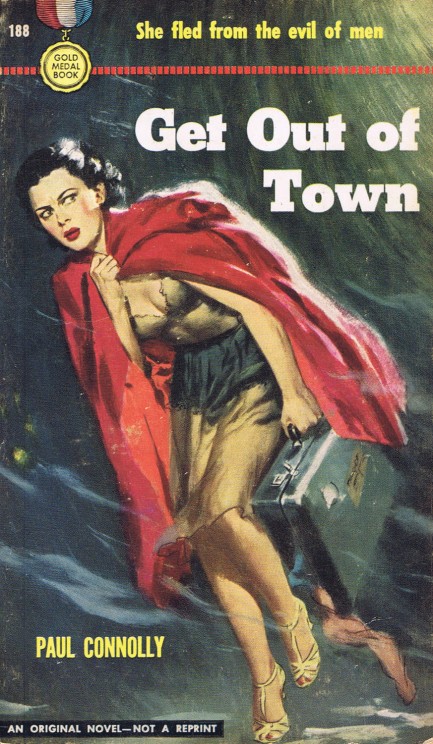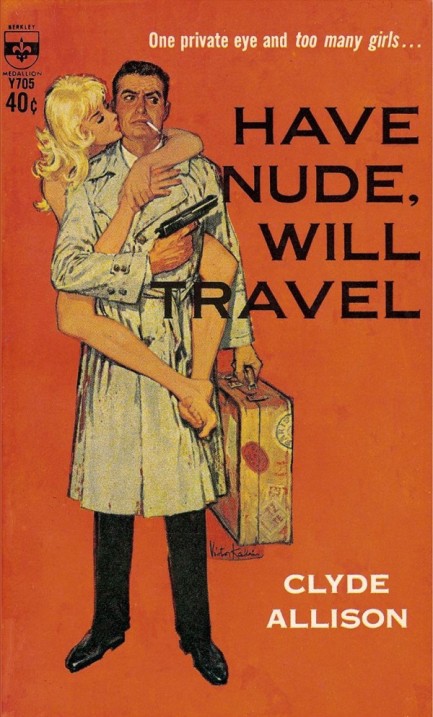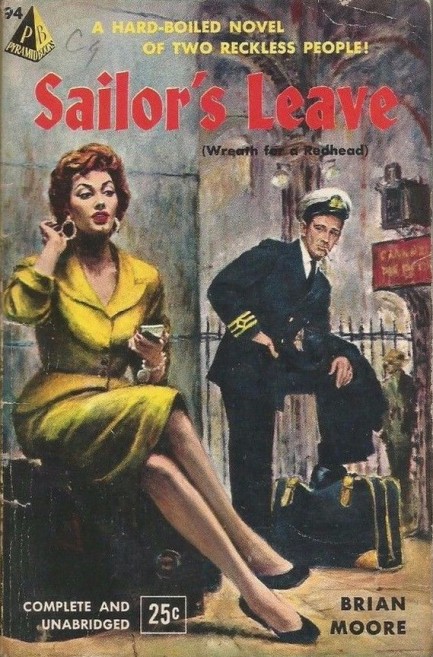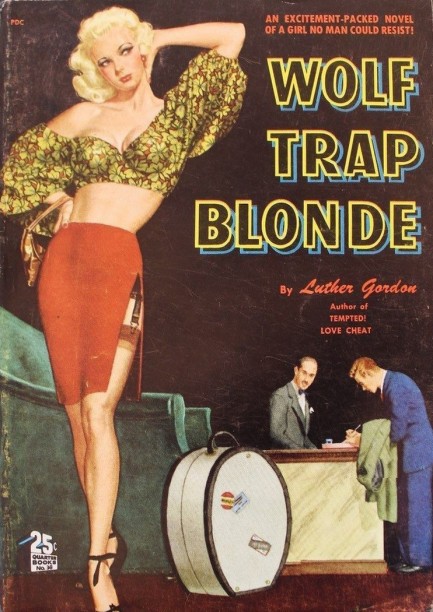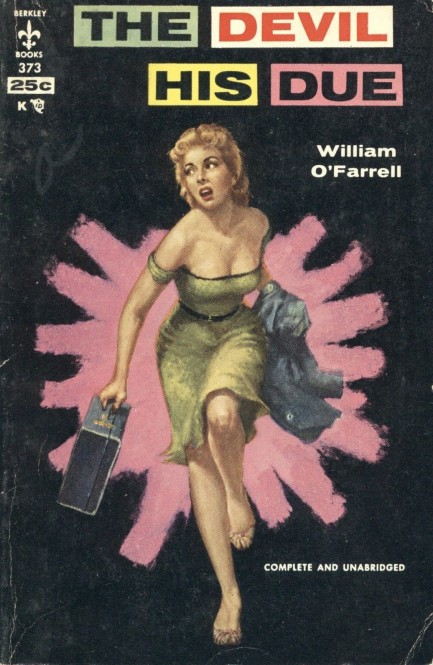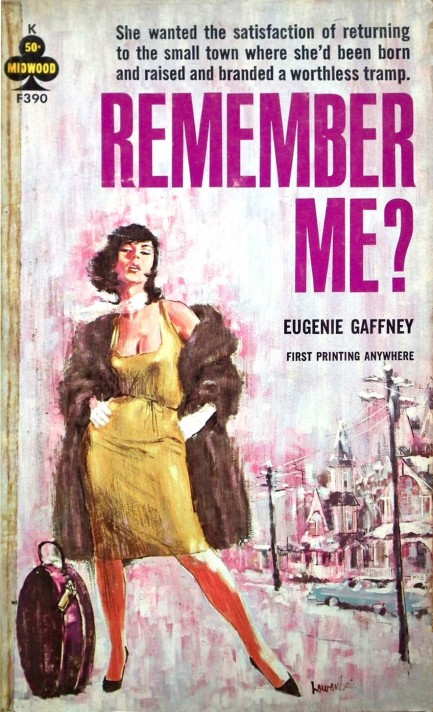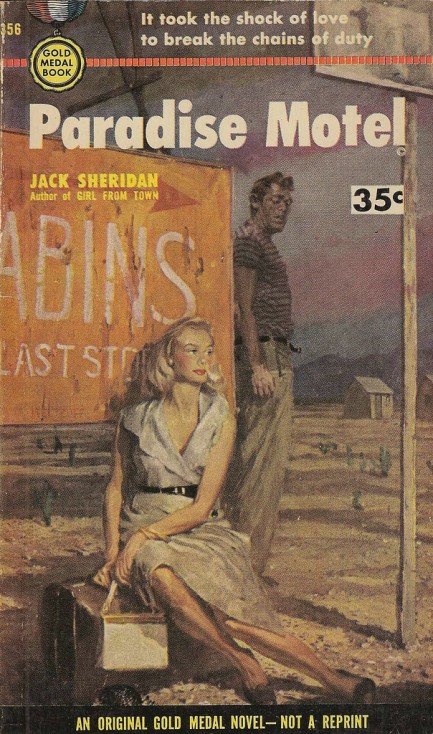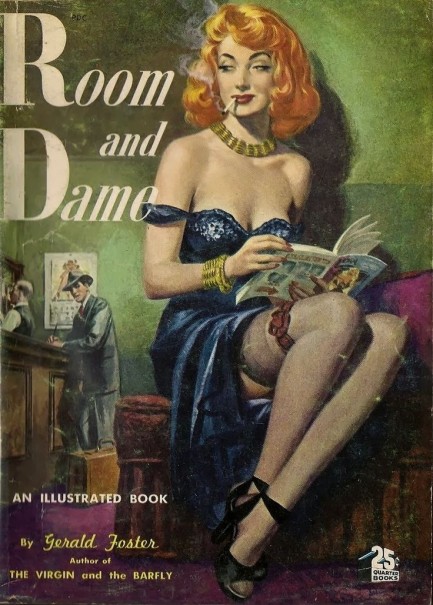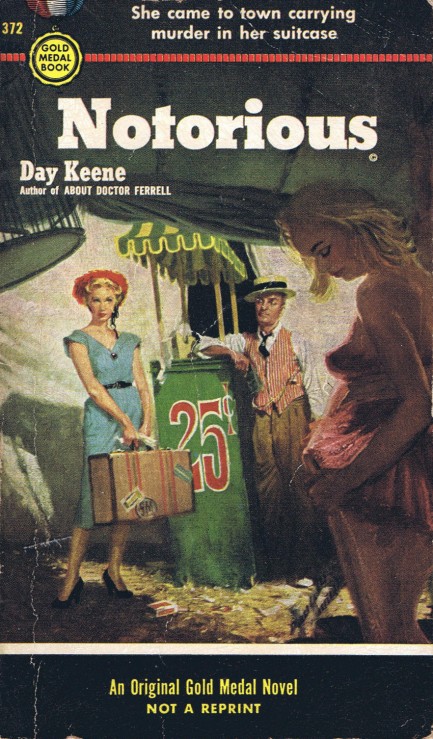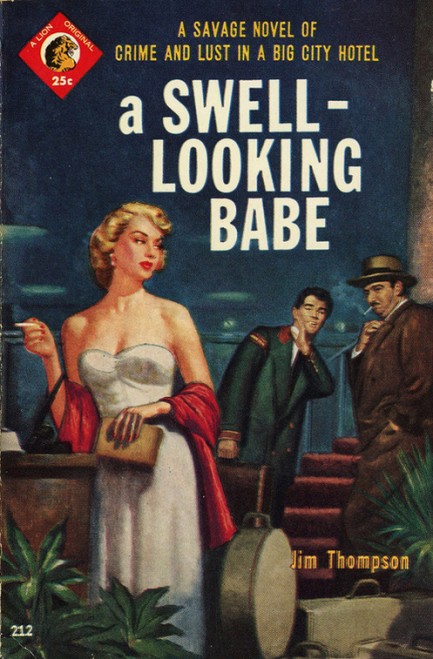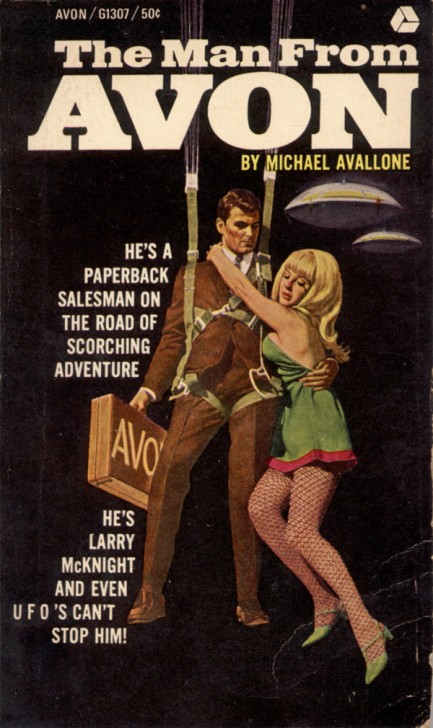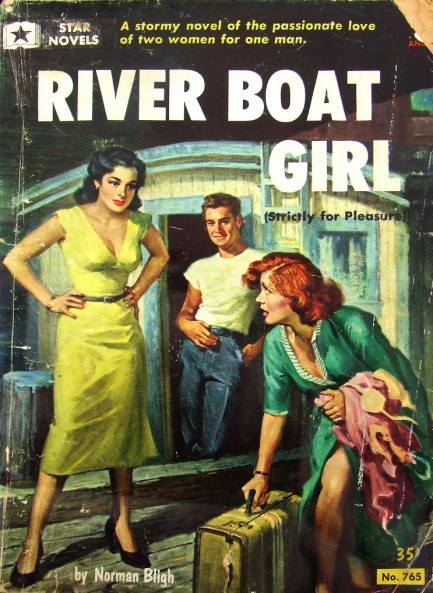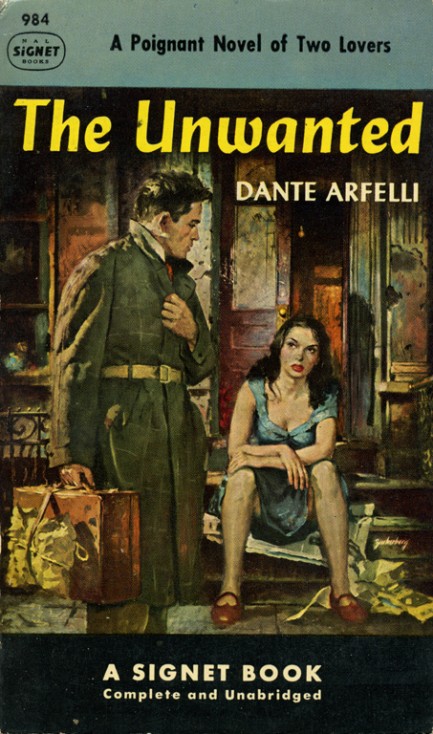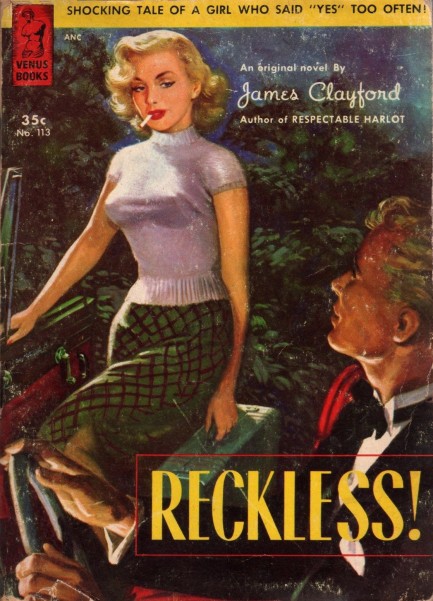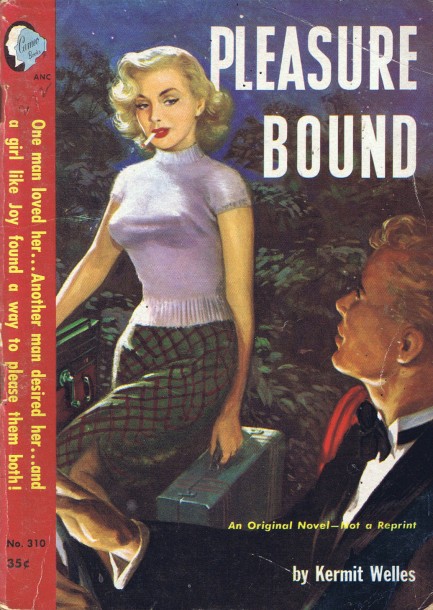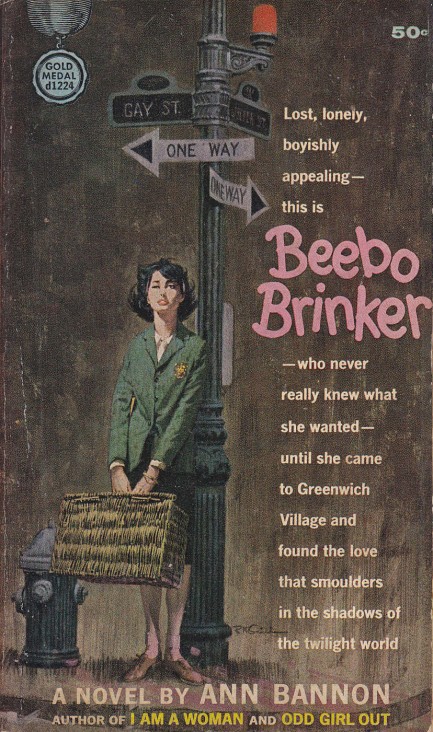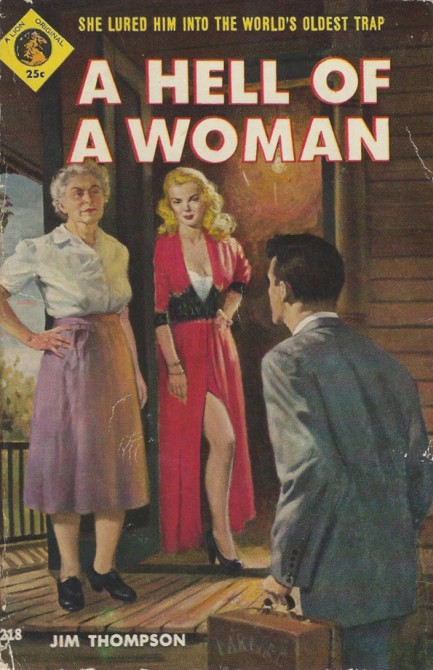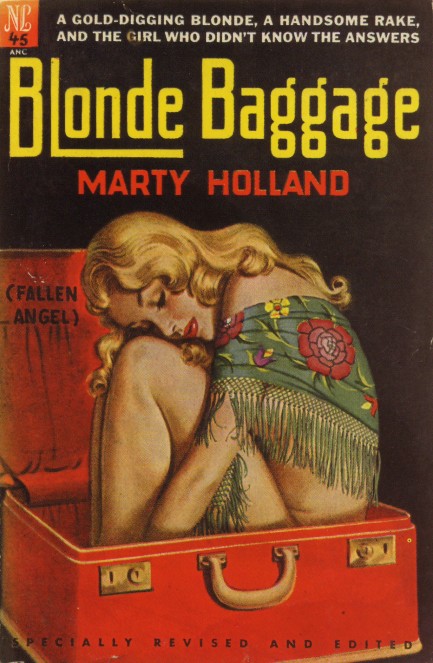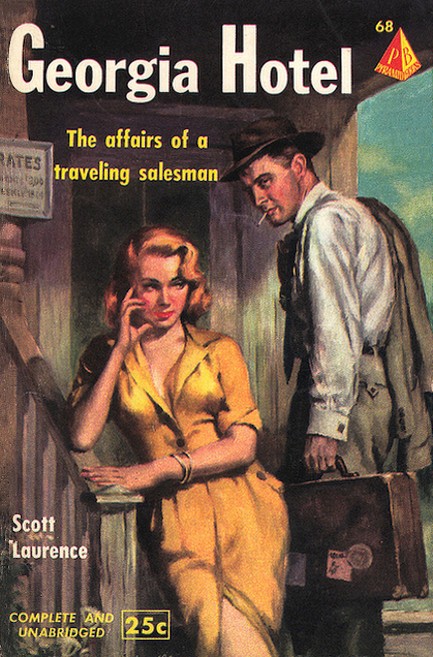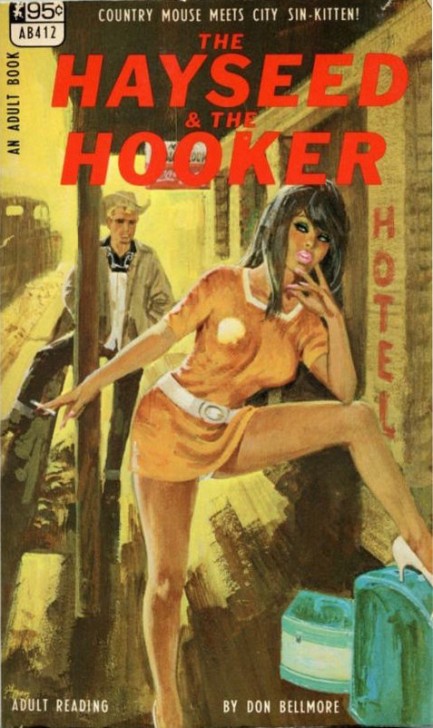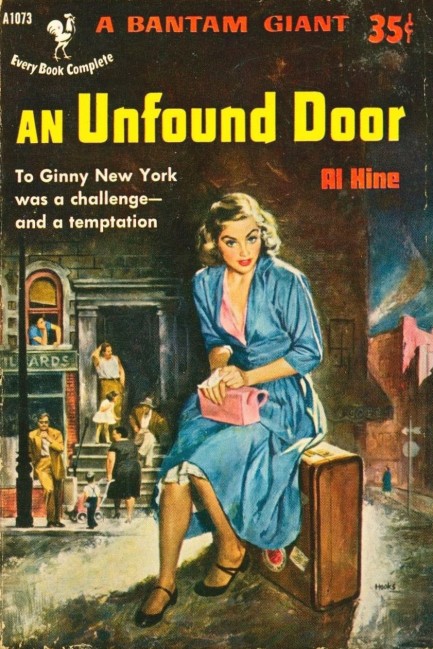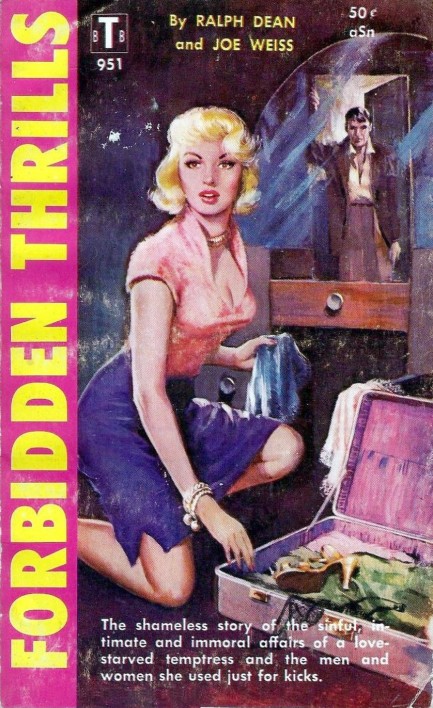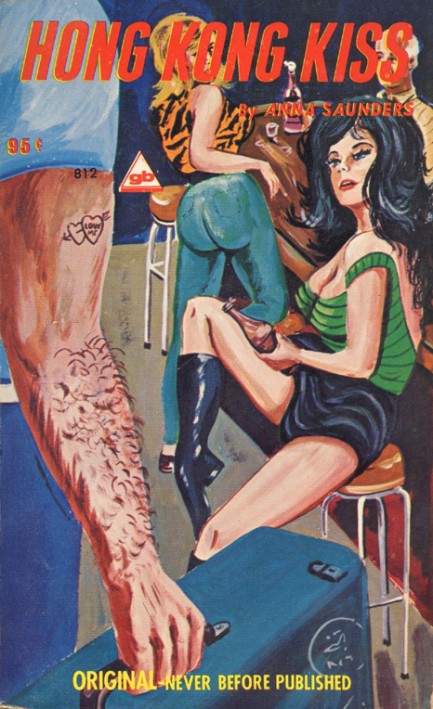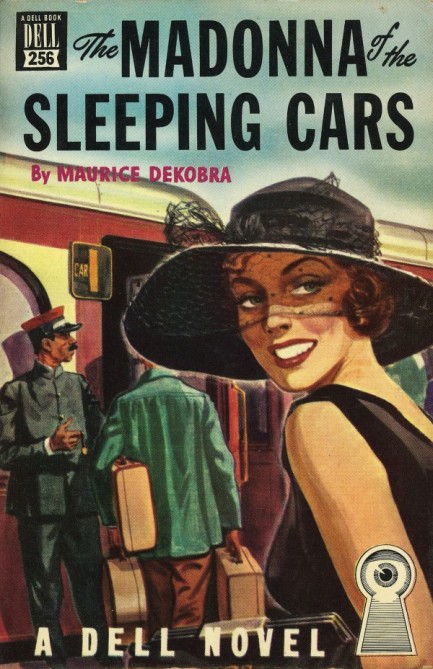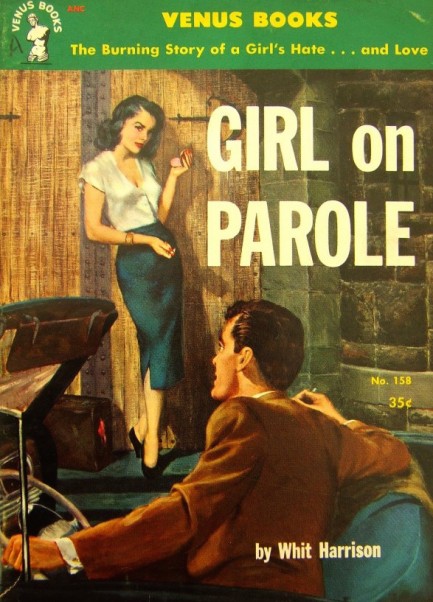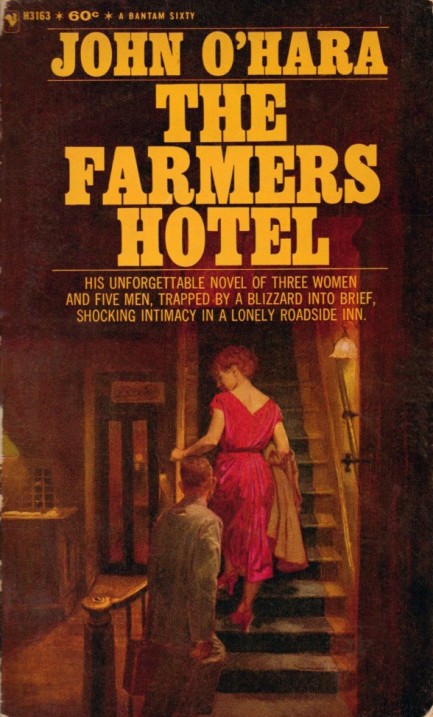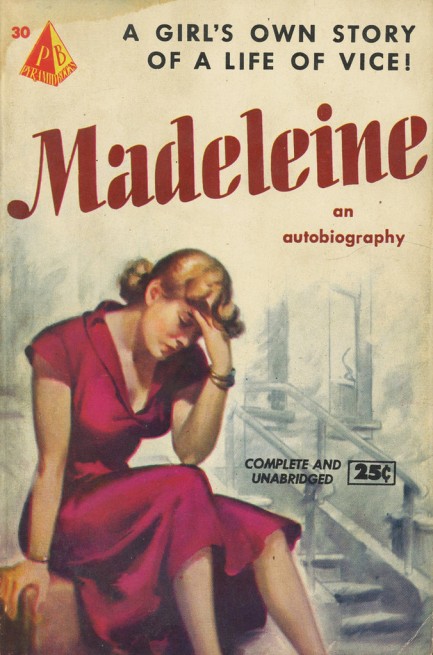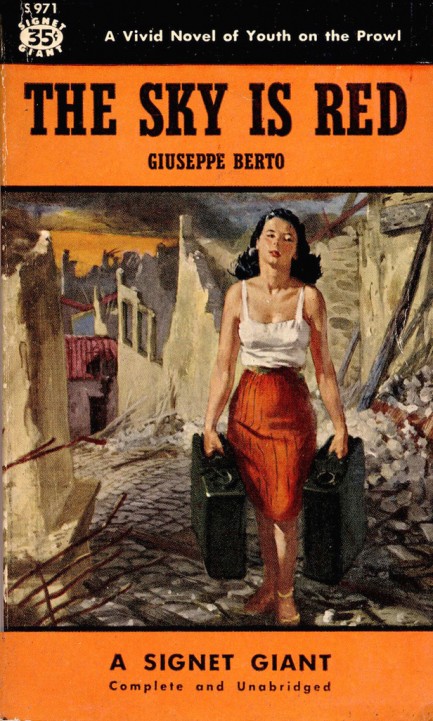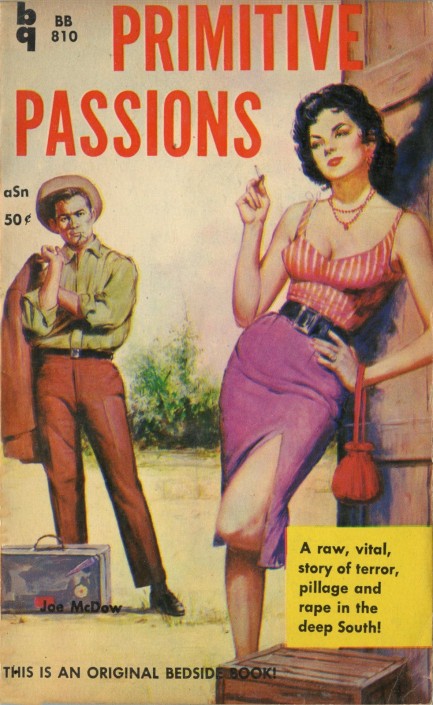 Don't look at me that way, raspberry martini. You know as well as I do you've been responsible for all my problems. 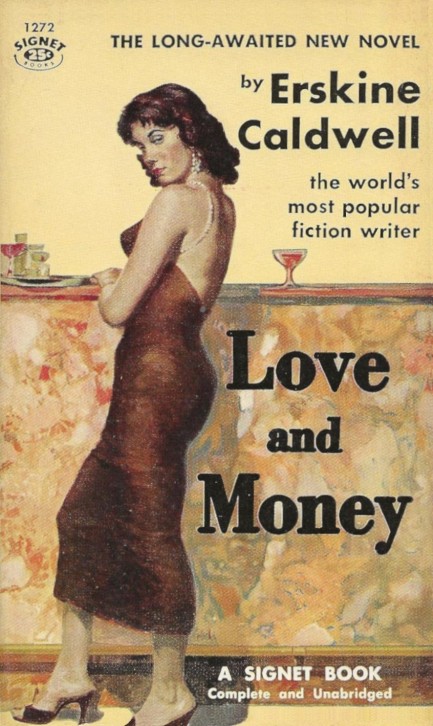
Do you have a friend like this? We bet lots of you do. The woman on Erskine Caldwell's Love and Money looks like she's playing hard to get, but her friend looks like the persuasive sort, so we bet she'll give in. This came from Signet Books in 1956 and the cover was painted by James Avanti. It fits into our ever growing women-in-bars collection.
 And if this goes as well as I hope, you can kiss the day after that goodbye too. 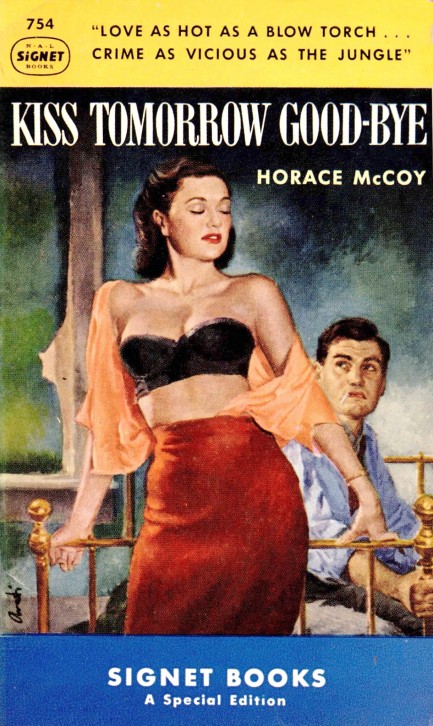
Above, a cover for Kiss Tomorrow Goodbye by Horace McCoy, for Signet Books with art by James Avati. McCoy was one of the more hardboiled writers of his era, often swimming in the same end of the pool as Jim Thompson and James M. Cain. We'll talk about a couple of his books in detail later. This one was adapted into a film of the same name in 1950 starring James Cagney and Barbara Payton. It's one we haven't seen, but we'll get around to that too.
 Cain is guaranteed to deliver. 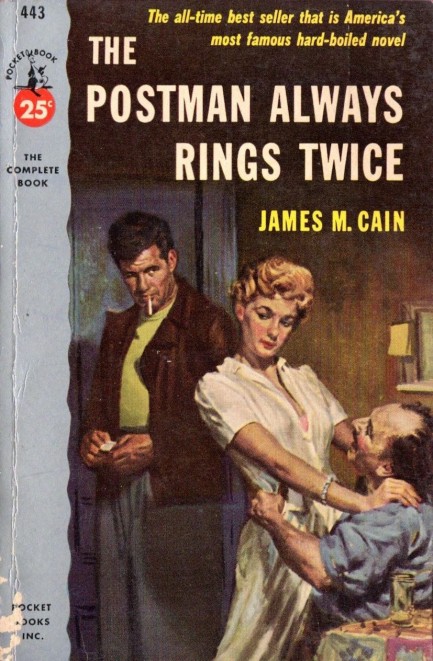
Above you see a Pocket Books cover for James M. Cain's The Postman Always Rings Twice, the 1953 edition. It has art from James Avanti, and is very different from Pocket's 1947 edition, which we showed you here. Avati is an illustrator we don't run across that often, but his work is easily recognizable, and always very good. See a few more examples here, here, and here. Needless to say (but we'll say it anyway), The Postman Always Rings Twice is a book you should read.
 Maybe I should have listened to my parents and stayed in community college. 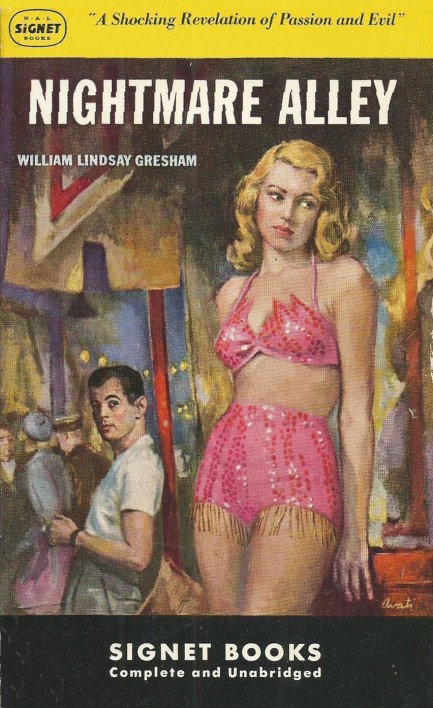
 Above, a nice James Avati cover for Nightmare Alley by William Lindsay Gresham, copyright 1949. The hardback of this came out in 1946, and it was adapted to the big screen in 1947 with Tyrone Power in the lead role, so this art reflects the movie, which is why the cover femme looks like and is dressed like co-star Coleen Gray. This is one of many mid-century novels set in and around carnivals, and it's one of the better ones, we think. The film version adheres reasonably close to Gresham's original vision. We talked about it several years ago, so check here if you're interested. We've also talked about several other carnival books over the years and now we have an idea to put together a cover collection along those lines. We'll have to see if there are any examples left to find. But in the meantime you can see what we've already collected here, here, here, and here. Above, a nice James Avati cover for Nightmare Alley by William Lindsay Gresham, copyright 1949. The hardback of this came out in 1946, and it was adapted to the big screen in 1947 with Tyrone Power in the lead role, so this art reflects the movie, which is why the cover femme looks like and is dressed like co-star Coleen Gray. This is one of many mid-century novels set in and around carnivals, and it's one of the better ones, we think. The film version adheres reasonably close to Gresham's original vision. We talked about it several years ago, so check here if you're interested. We've also talked about several other carnival books over the years and now we have an idea to put together a cover collection along those lines. We'll have to see if there are any examples left to find. But in the meantime you can see what we've already collected here, here, here, and here.
 No, there's two in every town. Unless you showed up here for some other reason, fuckboy. 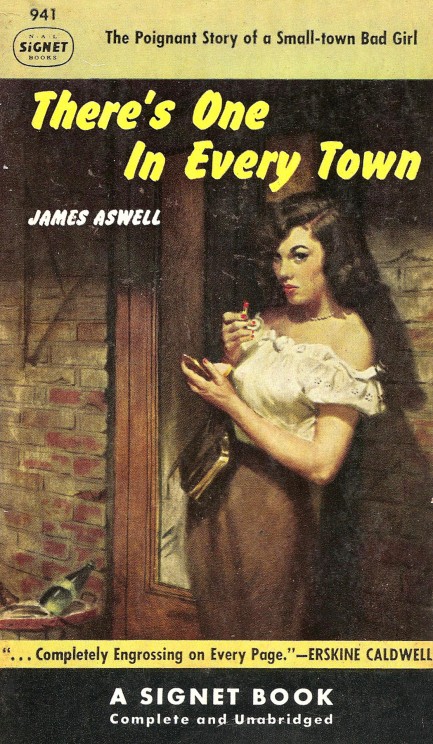
Above, a Signet paperback edition of James Aswell’s There’s One in Every Town, originally published in 1951, with this edition appearing in 1956. Aswell conducts readers into Erskine Caldwell country with a tale of sex and consequences. This genre was absolutely bursting back in the 1950s. We never stop running across entries that were previously unknown to us. This particular story is about young—very young—Jackie Vose, who by mere association ruins any male who comes near her. She's seen as salvageable by at least one man—or rather boy, since he's the seventeen-year-old heart-smitten narrator. But he never has much of a chance. It's the town doctor who actually gets in too deep, and it doesn't end well. South, sin, and sadness.
 It ain't your lucky day anymore, is it, Mister "Oh-look-I-got another-straight-flush"? 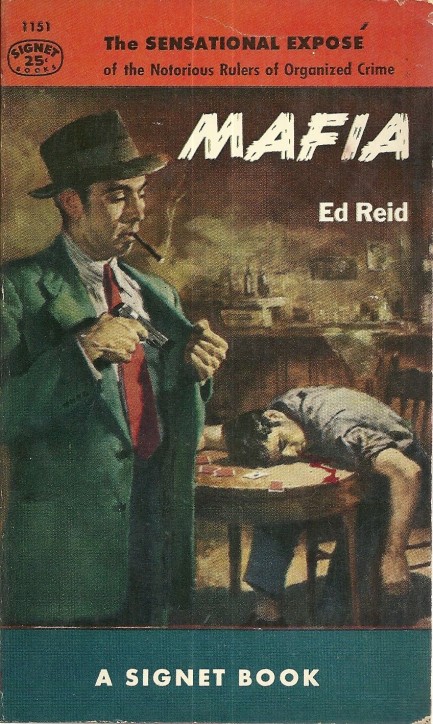
Mafia is a non-fiction rundown of the Italian organized crime rackets up to 1952, which is when the book first appeared in hardback. The above edition from Signet appeared in 1954. Author Ed Reid, who was an associate of organized crime crusader Charles Kefauver, covers cosa nostra personalities such as Vito Genovese, Lucky Luciano, the Fischetti Brothers, Albert Anastasia, and many others. Though non-fiction, Reid presents the information as a narrative, and we gather he took a bit of license. But he was a Pulitzer Prize winning reporter and Mafia was an eye-opener when it was published. Cover art is by James Avati, and serves as a reminder that the person with the pistol always has the best hand.
|
 |

The headlines that mattered yesteryear.
2003—Hope Dies
Film legend Bob Hope dies of pneumonia two months after celebrating his 100th birthday. 1945—Churchill Given the Sack
In spite of admiring Winston Churchill as a great wartime leader, Britons elect
Clement Attlee the nation's new prime minister in a sweeping victory for the Labour Party over the Conservatives. 1952—Evita Peron Dies
Eva Duarte de Peron, aka Evita, wife of the president of the Argentine Republic, dies from cancer at age 33. Evita had brought the working classes into a position of political power never witnessed before, but was hated by the nation's powerful military class. She is lain to rest in Milan, Italy in a secret grave under a nun's name, but is eventually returned to Argentina for reburial beside her husband in 1974. 1943—Mussolini Calls It Quits
Italian dictator Benito Mussolini steps down as head of the armed forces and the government. It soon becomes clear that Il Duce did not relinquish power voluntarily, but was forced to resign after former Fascist colleagues turned against him. He is later installed by Germany as leader of the Italian Social Republic in the north of the country, but is killed by partisans in 1945.
|

|
|

It's easy. We have an uploader that makes it a snap. Use it to submit your art, text, header, and subhead. Your post can be funny, serious, or anything in between, as long as it's vintage pulp. You'll get a byline and experience the fleeting pride of free authorship. We'll edit your post for typos, but the rest is up to you. Click here to give us your best shot.

|
|








 Above, a nice James Avati cover for Nightmare Alley by William Lindsay Gresham, copyright 1949. The hardback of this came out in 1946, and it was adapted to the big screen in 1947 with Tyrone Power in the lead role, so this art reflects the movie, which is why the cover femme looks like and is dressed like co-star Coleen Gray. This is one of many mid-century novels set in and around carnivals, and it's one of the better ones, we think. The film version adheres reasonably close to Gresham's original vision. We talked about it several years ago, so check here if you're interested. We've also talked about several other carnival books over the years and now we have an idea to put together a cover collection along those lines. We'll have to see if there are any examples left to find. But in the meantime you can see what we've already collected here, here, here, and here.
Above, a nice James Avati cover for Nightmare Alley by William Lindsay Gresham, copyright 1949. The hardback of this came out in 1946, and it was adapted to the big screen in 1947 with Tyrone Power in the lead role, so this art reflects the movie, which is why the cover femme looks like and is dressed like co-star Coleen Gray. This is one of many mid-century novels set in and around carnivals, and it's one of the better ones, we think. The film version adheres reasonably close to Gresham's original vision. We talked about it several years ago, so check here if you're interested. We've also talked about several other carnival books over the years and now we have an idea to put together a cover collection along those lines. We'll have to see if there are any examples left to find. But in the meantime you can see what we've already collected here, here, here, and here.




